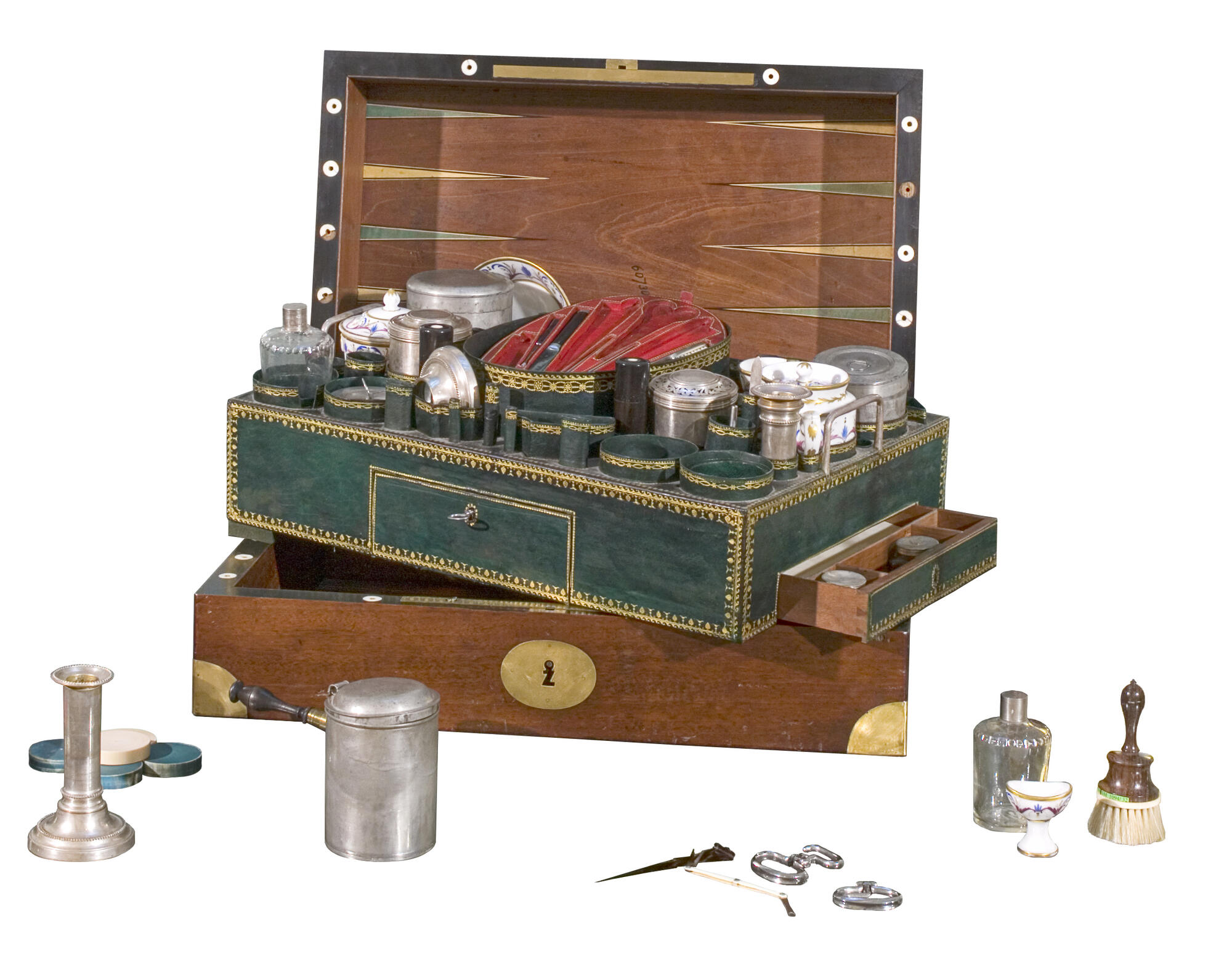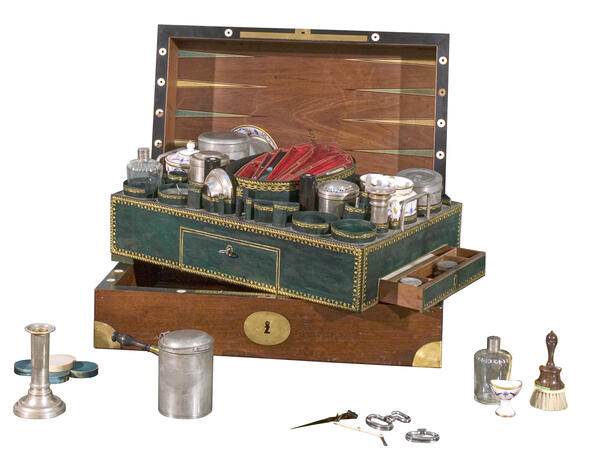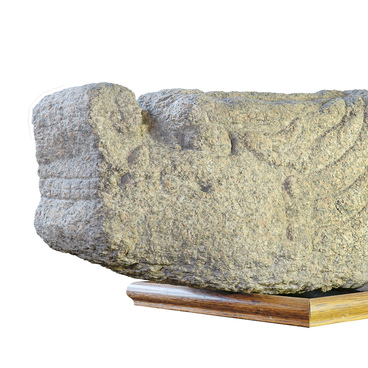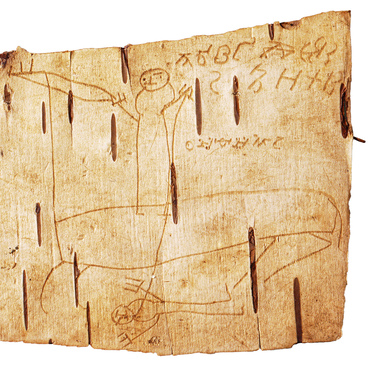Many Russian travelers brought small chests with them on the road, in which they kept the most necessary things: toiletries, dishes and tea sets, paper for letters, pens and ink, as well as sewing kits or other needlework equipment for ladies. They called such caskets “pogrebtsi” in Russian, or “nécessaires” in French (meaning “travel kits” or “toiletry bags”). There were special travel boxes for men and women, as well as for officers, merchants or aristocrats. They were intended for one or two travelers. Expensive travel cases made great wedding or official gifts: for example, Napoleon Bonaparte presented a similar set to Emperor Alexander I, and French minister Joseph Fouché — to his bride.
The travel case from the collection of the Historical Museum is a compact mahogany chest with brass overlays and carrying handles on the sides. It features a hinged lid, and another smaller box-insert upholstered in green Moroccan leather with a gilded embossed pattern along the edges. The box has special dividers which create separate compartments for large items, like a teapot, glass vials, cups and saucers, cans for cane sugar. Two collapsible candlesticks are also stored inside.
There are small cells between the larger compartments. They contain a case for needles, a spool of thread, a shaving brush, steel hooks which were used to pull on boots with soft tops. There is a small ply case in the center of the insert made up of oval trays upholstered in crimson Moroccan leather. They contain a toothbrush, tweezers, a pair of compasses, a rectangular box with powder. Some of the items are missing, but judging from the shape and size of the cells, it can be determined that the set included straight razors and a whetstone for them, several knives, scissors, a brush.
In total, the set consists of 80 items. Taking into account the type of items and the quality of materials, it can be assumed that the travel case belonged to a well-off man who was not very wealthy; perhaps, an officer, an official or a small landowner who used to travel constantly. The Historical Museum received the chest in 1927 from the Central Repository of the State Museum Fund.
The travel case from the collection of the Historical Museum is a compact mahogany chest with brass overlays and carrying handles on the sides. It features a hinged lid, and another smaller box-insert upholstered in green Moroccan leather with a gilded embossed pattern along the edges. The box has special dividers which create separate compartments for large items, like a teapot, glass vials, cups and saucers, cans for cane sugar. Two collapsible candlesticks are also stored inside.
There are small cells between the larger compartments. They contain a case for needles, a spool of thread, a shaving brush, steel hooks which were used to pull on boots with soft tops. There is a small ply case in the center of the insert made up of oval trays upholstered in crimson Moroccan leather. They contain a toothbrush, tweezers, a pair of compasses, a rectangular box with powder. Some of the items are missing, but judging from the shape and size of the cells, it can be determined that the set included straight razors and a whetstone for them, several knives, scissors, a brush.
In total, the set consists of 80 items. Taking into account the type of items and the quality of materials, it can be assumed that the travel case belonged to a well-off man who was not very wealthy; perhaps, an officer, an official or a small landowner who used to travel constantly. The Historical Museum received the chest in 1927 from the Central Repository of the State Museum Fund.



